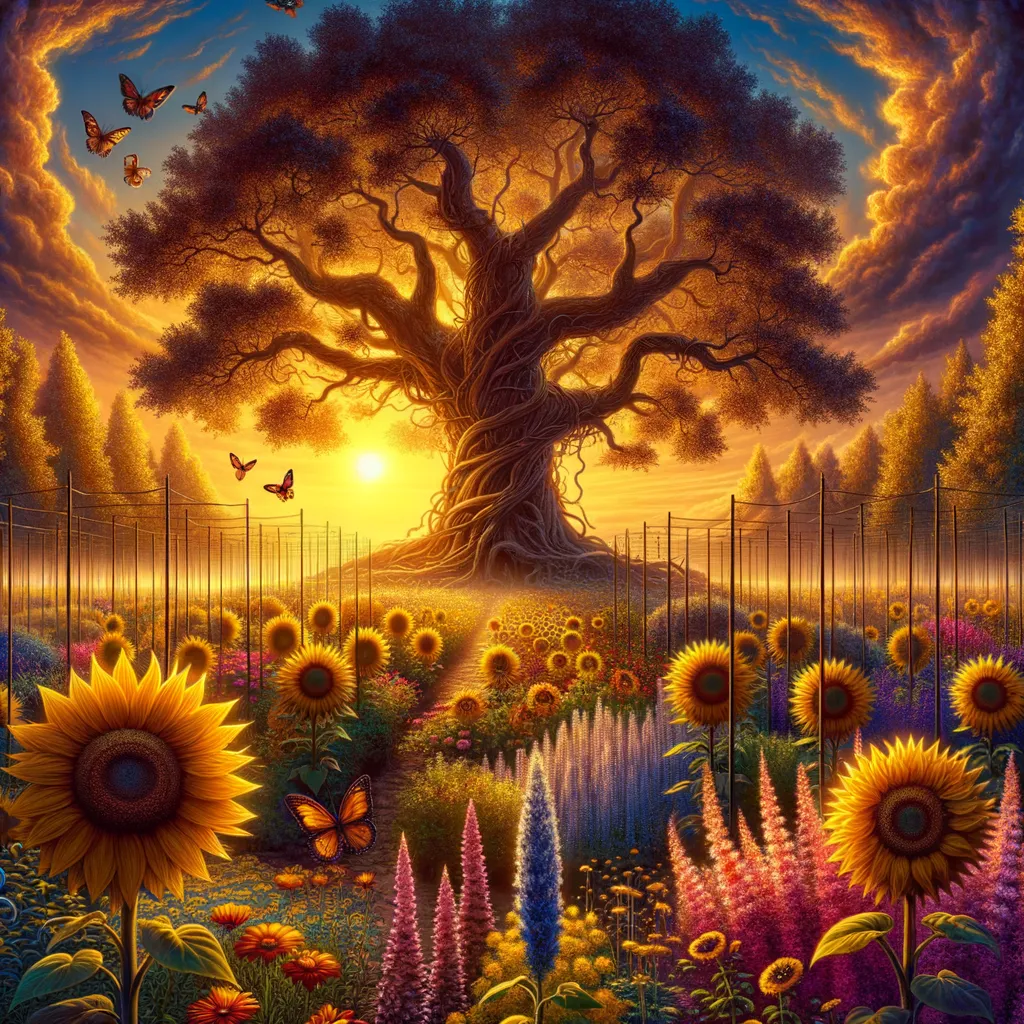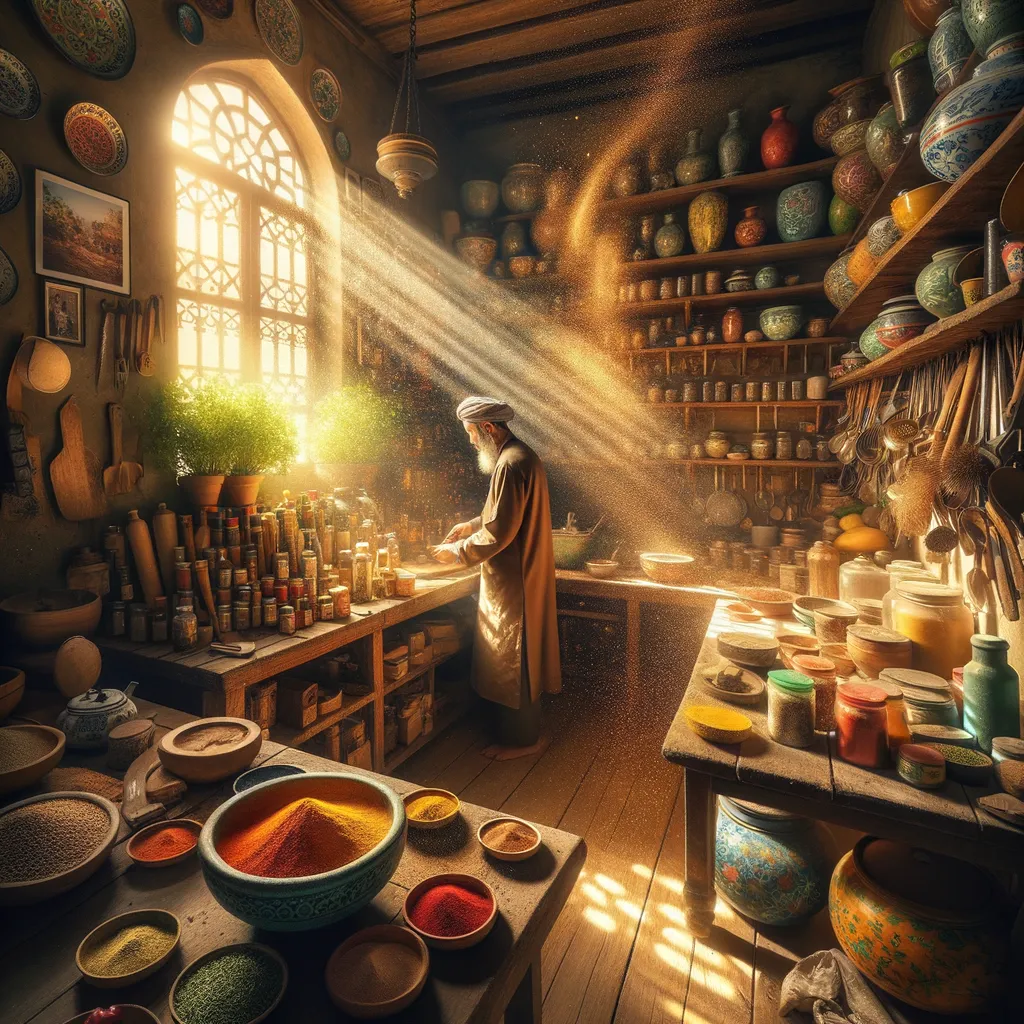A Hidden Garden: Unveiling Secrets of Healing and Growth
In a moment that felt both fleeting and eternal, a vibrant healing garden began to take shape, each flower representing a unique chapter of resilience and growth. Sunflowers stood tall, symbolizing the courage to seek light in the darkest of times, while delicate cherry blossoms whispered of ephemeral joys, reminding of beauty found in fleeting moments. Amidst the strong oak, a testament to wisdom gained through life’s trials, the soothing scents of aromatic herbs wove a tapestry of comfort and nurturing, each leaf echoing the importance of self-care. Wildflowers danced in spontaneous celebration of life’s unexpected joys, while thorny vines served as poignant reminders that healing often walks hand in hand with struggle. As the sun set, the garden revealed itself not just as a sanctuary, but as a living metaphor for the continuous journey of discovery and emotional growth, inviting reflection on how to tend to both the blooms and thorns along the way.
In the memory of June 7, 2018, I found myself standing on the cusp of a new beginning, a moment suspended in time that felt like a soft breeze carrying the scent of lavender and the promise of healing. The sun hung low in the sky, casting a warm golden glow that danced through the leaves of an old oak tree nearby. This was not merely a day on the calendar; it was a canvas awaiting the brushstrokes of my emotional journey. I envisioned a healing garden, a sanctuary where the colors of my soul could bloom, each flower a testament to my growth, each leaf whispering tales of resilience.
At the heart of this imagined garden, the first blossom would be the resilient sunflower, its vibrant yellow petals stretching eagerly toward the sun. This flower symbolized the courage I had summoned through life’s tempests, the way I had learned to turn my face toward the light, even in the darkest hours. With each sunflower standing tall, I could almost feel the energy of hope surging through the soil, roots intertwining with my own experiences, reminding me that growth often comes from embracing discomfort.
As I wandered through the garden in my mind, I envisioned the delicate petals of cherry blossoms, fragile yet breathtakingly beautiful. These fleeting blooms would represent the moments of joy that had painted my life with color, ephemeral yet unforgettable. They would remind me that beauty can often be found in transience, that the sweetness of a moment is amplified by its impermanence. Each spring, as the blossoms unfurled, they would invite reflection on the joyous memories that lingered like a soft echo in my heart.
Yet, the garden would not be complete without the sturdy, ever-present oak. Its gnarled branches would symbolize wisdom, a testament to the lessons learned through trials and tribulations. The oak would remind me of the strength gained from vulnerability, the way life’s storms had shaped my character, bending but never breaking. This tree, with its wide canopy, would offer shade to the weary and solace to the lost, a haven of stillness amid the chaos of life.
As I continued to design this sanctuary, the aromatic herbs would weave through the pathways—basil, mint, and rosemary, each carrying a distinct fragrance that spoke of healing and comfort. These herbs would represent the nurturing aspects of my journey, the self-care practices that had grounded me in tumultuous times. I could almost taste the fresh basil in a summer salad, feel the coolness of mint tea soothing my spirit, and inhale the earthy scent of rosemary, a reminder that healing often requires patience and intentionality.
In the corners of this garden, I imagined wildflowers growing freely, a riot of colors that spoke of spontaneity and joy. They would embody the unexpected moments that had surprised me—those delightful detours that led to laughter and connection. Each wildflower, unique in its own right, would remind me that life’s beauty often lies in its unpredictability, urging me to embrace spontaneity as a necessary part of my emotional growth.
However, lurking beneath the surface of this vibrant tapestry would be the shadows, the thorny vines that represented the pain and grief I had encountered. These thorns would serve as a poignant reminder that healing is not linear; it is a journey marked by both beauty and struggle. They would whisper of the lessons learned through sorrow, the strength forged in vulnerability, and the understanding that every wound carries the potential for growth.
As the sun dipped below the horizon, casting an amber hue over the garden, I could feel the quietude settling in, a reflective pause that invited contemplation. In this moment of stillness, I realized that the garden was not merely a physical space, but a metaphor for my inner landscape. It was a living testament to the myriad emotions that shaped me, a sanctuary where I could return to nurture my spirit, to remember the blooms of joy and the lessons of sorrow.
As the day faded into twilight, I understood that the healing garden was a space for continual discovery, a place where new seeds could be sown, and fresh blooms could emerge. Each visit would bring with it the potential for new insights, the promise of continued growth, and the opportunity to embrace the ever-evolving tapestry of my emotions.
In this intricate garden of healing, where each flower and thorn told a story, I was left with a powerful realization. How do we tend to our own gardens of growth, nurturing both the blooms of joy and the thorns of pain as we navigate the complexities of our lives?
A healing garden thrives in the delicate balance of vibrant blooms and thorny shadows, inviting the heart to embrace both joy and sorrow as essential threads in the tapestry of growth.



